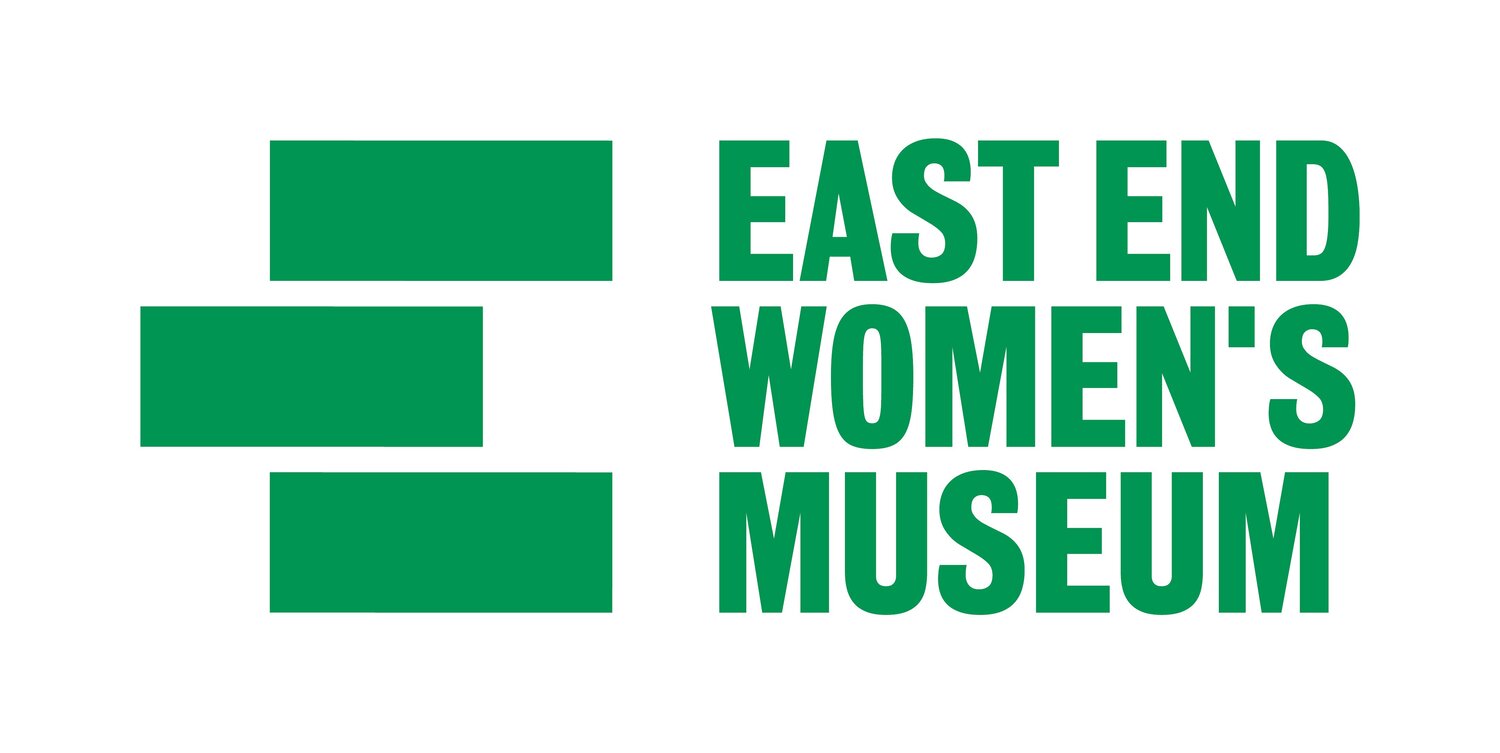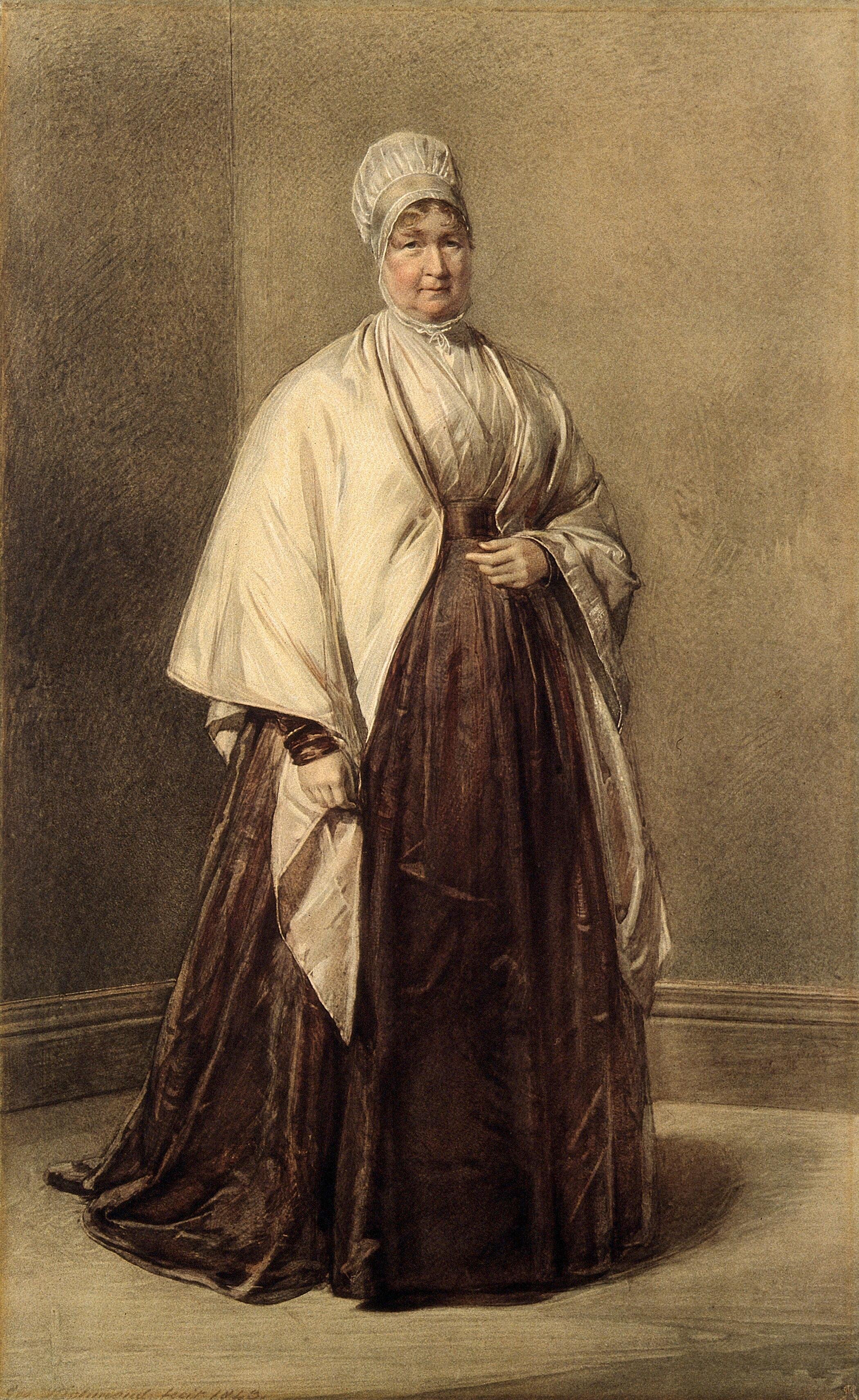Prison reformer, social reformer, abolitionist, philanthropist
“No person will deny the importance attached to the character and conduct of a woman, in all her domestic and social relations, when she is filling the station of a daughter, a sister, a wife, a mother, or a mistress of a family. But it is a dangerous error to suppose that the duties of females end here.”
- Fry, Elizabeth, quoted in Observations on the Visiting, Superintendence, and Government of Female Prisoners 1827
You may recognise Elizabeth Fry from the old £5 notes (2002-2016). Fry lived in the East End areas of East Ham and Forest Gate. Although she was best known for her work on prison form, she was also a social reformer, abolitionist and philanthropist.
Elizabeth Fry. Colour photogravure after G. Richmond, 1843. Wellcome Collection Library Archive.
Early life
Elizabeth Gurney was born in Norwich on the 21st May 1780 to an influential Quaker family. The Gurneys played a big part in the development of Norwich, establishing Gurney’s bank in 1770 which eventually merged into Barclays. Elizabeth grew up in the country house Earlham Hall where abolitionist Amelia Opie was a frequent visitor. She married tea merchant and fellow Quaker Joseph Fry on 19 August 1800 in Norwich, and they moved to the City of London.
Move to the East End and Newgate Prison
In 1809, Elizabeth moved to Plashet House in East Ham (demolished in the 1880s) where she raised her 11 children. She was active in the local area, co-founding a school for girls and donating food and clothing to the community. She was also an early advocate of vaccinations and helped to distribute smallpox inoculations in East Ham and neighbouring villages. It was during her time living in the East End that she began her most famous work on prison reform.
In 1811, Fry became an official Quaker minister of the Religious Society of Friends. Shortly after, circa 1812-1813, she visited Newgate prison for the first time, which was located on the corner of Newgate Street and Old Bailey Street (demolished in 1902). Upon her first visit, Fry was appalled by the conditions. Men, women and children were kept in overcrowded and unsanitary conditions. She wrote in a letter to one of her children about her early visits stating “I have lately been twice to Newgate to see after the poor prisoners who had poor little infants without clothing, or with very little and I think if you saw how small a piece of bread they are each allowed a day you would be very sorry”.
Prison reform
Elizabeth set about making changes and consulted with prisoners and prison authorities. Believing that prisoners should be reformed rather than punished, she introduced a system of classification of prisoners, new clothing, education (religious and primary) and paid employment.
Perhaps due to her empathy Elizabeth was trusted and respected amongst the prisoners, she put herself amongst the inmates unaccompanied and treated them as equals. In her book Observations on the Visiting, Superintendence and Government of Female Prisoners (1827) She wrote “Much depends on the spirit in which the visitor enters upon her work … the spirit, not of judgment, but of mercy. She must not say … ‘I am more holy than thou’ but must rather keep in perpetual remembrance that ‘all have sinned, and come short of the glory of God”.
She established the British Ladies’ Society for Promoting the Reformation of Female Prisoners in 1817. This was the first nationwide women’s organisation in Britain. The society spanned across Europe with branches in Russia, Italy, Switzerland and the Netherlands.
In 1818,Fry became the first woman to present evidence to a House of Commons committee on the conditions of prisons. This helped bring in a series of parliamentary measures introduced during the 1820s, including the 1823 Gaols Act which stated that female and male prisoners should be separated, required the installation of female wardens to guard female prisoners, prohibited use of iron manacles and ended the death penalty for 130 crimes.
As well as Newgate, she helped improve other prisons including convict ships. For more than 25 years she visited every convict ship bound for penal colonies in Australia. A surviving relic of Fry’s influence on convict ships is the Rajah Quilt. Lydia Irving (a member of Fry’s British Ladies Society) provided women on the Rajah ship with sewing materials. The women on-board created a beautiful quilt on their way to Australia which was presented to the Van Diemen’s Land (Tasmania) Governor’s Wife who sent it to Elizabeth Fry as a testament to her work.
“To the ladies of the convict ship committee, this quilt worked by the convicts of the ship Rajah during their voyage to van Diemen’s Land is presented as a testimony of the gratitude with which they remember their exertions for their welfare while in England and during their passage and also as a proof that they have not neglected the ladies kind admonitions of being industrious. June 1841”.
The Rajah Quilt is currently on display in the National Gallery of Australia.
Other work
Yet, Elizabeth didn’t just stick to prison reform. She was also active in other areas of social reform and charity campaigning, such as hospitals, mental asylums and workhouses. In 1819, she opened a homeless shelter and in 1824 opened the Brighton District Visiting Society to provide help for the poor.
In 1840, she established a training school for nurses, under the name The Institution of Nursing Sisters, where nurses were instructed to care for the poor in the same way they would the wealthy. Students from here were taken to work as nurses in the Crimean War under Florence Nightingale. An article in the British Medical Journal in 1897 described Fry as “the founder of Nursing”.
Forest Gate and Slave Abolition
Elizabeth’s husband Joseph Fry went bankrupt in 1828 and the family moved to a smaller house in The Cedars on Portway, Forest Gate (demolished in 1960).
Elizabeth’s sister, Hannah, was married to the abolitionist MP Thomas Fowell Buxton. She joined him and an old family friend, Amelia Opie, as well as other Quakers, in campaigning for the abolition of the slave trade, with the Slavery Abolition Act finally being passed in 1833. Describing the act in her journals Elizabeth wrote “At the close of this year,-in public matters, I look upon Slavery being abolished, as an unspeakable blessing”.
In 1840, despite women not being invited, she went to the World Anti-Slavery convention at Exeter Hall (Strand, London) which was also attended by American abolitionist and feminist Elizabeth Cady Stanton.
Later life and death
Elizabeth showed no signs of slowing down as she got older, making 5 trips to Europe between 1838-1845. She published a book in 1841 An address of Christian counsel and caution to emigrants to newly-settled colonies and in 1844 she opened a Refuge for Prostitutes in Hackney.
Elizabeth Fry died from a stroke on the 12th of October 1845 aged 65 in Ramsgate. Her remains were interned at the Quaker Burial Ground in Barking.
Legacy
After her death, the Lord Mayor of London founded an asylum in memory of Elizabeth at 195 Mare Street, Hackney. It offered refuge to young women discharged from prison. This merged with the Manor House Refuge (Dalston, Hackney) eventually moving to Reading where it is still in operation to this day. Elizabeth Fry is memorialised worldwide, perhaps most notable for being the first non-royal woman to be featured on a British bank note (£5 note 2002-2016). Canada celebrates National Elizabeth Fry week every May and she features on the Quaker Tapestry. In the East End there are dedications to her at East Ham Library and Mare Street, Hackney.
Author
Elizabeth Barrett is a History student at the Open University currently living in the East End area of Wapping.
Sources
Observations on the Visiting, Superintendence, and Government of Female Prisoners – Elizabeth Fry 1827
The National Archives https://discovery.nationalarchives.gov.uk/details/c/F41829
Twixt Candle and Lamp: The Contribution of Elizabeth Fry and the Institution of Nursing Sisters to Nursing Reform - R G HUNTSMAN, MARY BRUIN and DEBORAH HOLTTUM, University of Cambridge
https://www.quakersintheworld.org/quakers-in-action/13/Elizabeth-Fry
National Museum of Australia https://nga.gov.au/rajahquilt/
The British Medical Journal
Wellcome Collection Library https://wellcomecollection.org/works/zygrn8d5

